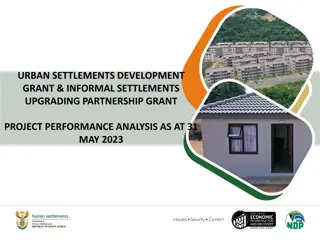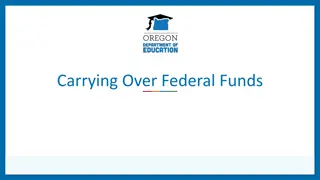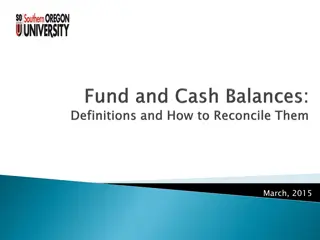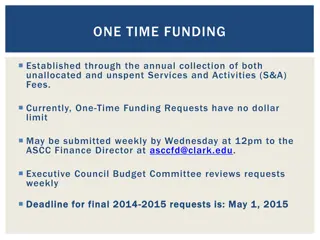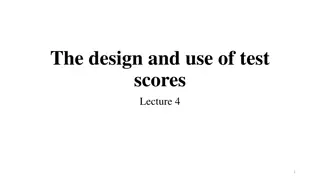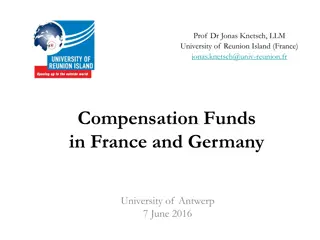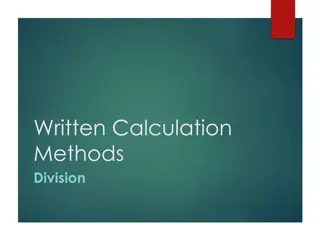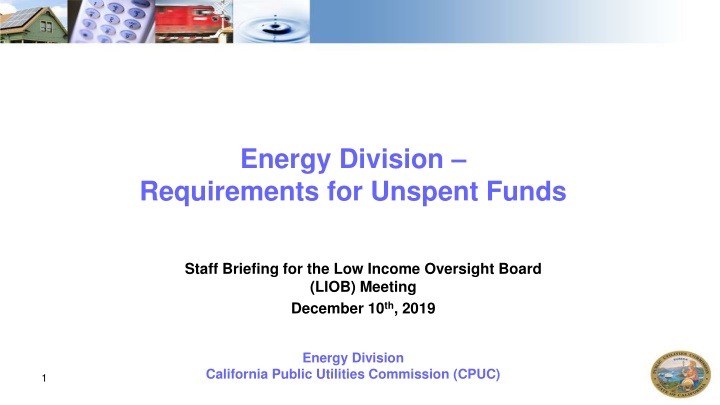
Energy Division Requirements for Unspent Funds
Explore the regulations and guidelines for managing unspent funds in the energy division, as discussed in CPUC meetings. Learn about fund shifting, budget carry-overs, and program adjustments to optimize spending and achieve statutory objectives.
Download Presentation

Please find below an Image/Link to download the presentation.
The content on the website is provided AS IS for your information and personal use only. It may not be sold, licensed, or shared on other websites without obtaining consent from the author. If you encounter any issues during the download, it is possible that the publisher has removed the file from their server.
You are allowed to download the files provided on this website for personal or commercial use, subject to the condition that they are used lawfully. All files are the property of their respective owners.
The content on the website is provided AS IS for your information and personal use only. It may not be sold, licensed, or shared on other websites without obtaining consent from the author.
E N D
Presentation Transcript
Energy Division Requirements for Unspent Funds Staff Briefing for the Low Income Oversight Board (LIOB) Meeting December 10th, 2019 Energy Division California Public Utilities Commission (CPUC) 1
D.12-08-044 allowed the IOUs continued flexibility to: Commit funds for expenditure during the next program cycle for long-term projects that required funding beyond the current budget cycle. Shift funds from one year to another within budget cycles. Shift and borrow from the next budget cycle, if approved, to avoid program interruptions. Carry over all remaining, unspent funds from program year to program year or budget cycle to budget cycle. These activities did not require prior approval but utilities were required to track and maintain a clear and concise record of all fund shifting in their compliance reports. 2
2009-2015 Unspent Funds Significant unspent funds, from the 2009-2015 ESA Program years, resulted in necessary changes and enhanced reporting, monitoring, and tracking unspent Program funds. Unspent funds resulted from: Budget carry over from prior years, Estimates and authorizations that exceeded actual expenditures over time, Overestimates based on the maximum level of program activity possible. The size of the carry-over budgets, $400M combined, raised the question of why funds were not being spent, and whether the program focus or rules should be recalibrated to enable spending to achieve statutory objectives 3
D.17-12-009 addressed the accumulated unspent fund balance and: Permitted IOUs to use an Advice Letter process consistent with the Fund Shifting Rules adopted for the General Energy Efficiency programs, in lieu of a motion to request a fund shift of carry over funds between their gas and electric departments. (page 363 of modified decision) Authorized the use of unspent funds to support the programmatic initiatives (including ESA MF CAM, new measures, etc.) and program rule changes adopted in the decision and approved via conforming or mid-cycle Advice Letters or petition for modification. (page 364) Implemented more rigorous monitoring, tracking, and carry-over processes to prevent a similar accumulation of unspent funds from recurring, including quarterly reports to the LIOB. (page 365) 4
Current Fund Shifting Rules and Examples Funds can be shifted via a Tier 2 Advice Letter (AL), per the clarification language in D.17-12-009 that adopts the AL process in lieu of previous rules that may have required ALJ approval or a motion. (pages 364, 366) The General EE fund shift rules, which are outlined in the EE Policy Manual (v5), which require ALs for shifts greater than 15% of an annual amount. For example, if $15 is being shifted from Statewide Program A (approved budget of $110) to Statewide Program B (approved budget of $80), then an AL is needed because either $15/$110 or $15/$85 is more than 15%. However, D.17-12-009 refers to total ESA budget when trying to determine the denominator for ESA fund shifting. If an IOU were requesting to shift an amount equal to 30% of their total ESA budget, then ED could approve 25% (the cap) with the rest going to offset collections. (page 366) 5
Going Forward The post 2020 guidance document requires the IOUs address the following in their application regarding unspent funds: Discuss unspent funds, and any failure to meet household treatment goals, for each completed year of the prior budget cycle. Discuss how you will more accurately budget upfront for activities and take actions, to mitigate performance shortfalls before the end of the annual period to avoid failing to meet annual performance targets. 6
Definitions and Clarifications Committed funds are committed to a specific contract or customer project Uncommitted funds are unspent funds that are not committed to existing projects or contracts Unspent funds, without qualification, refers to all authorized yet unspent funds, whether committed or not 7



